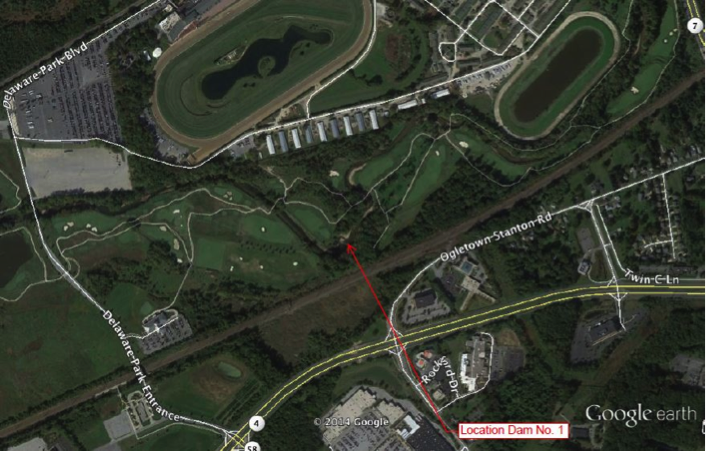Shad Restoration and Dam Removal
On December 4, 2014, a major milestone was completed in the Shad Restoration and Dam Removal Project. After four years of feasibility and hydrological studies and sampling, the historic Byrnes Mill Dam also known as White Clay Creek Dam No. 1, located on the White Clay Creek Country Club golf course in Delaware Park, was successfully breached. The dam is the first of a number of obsolete, low, on-stream dams on the White Clay Creek slated for partial or total removal. The successful removal of Dam No. 1 in early December 2014 effectively restores approximately 3.5 miles of fish passage and habitat to the river. Striped bass, and other anadromous fish (fish that live in the ocean and breed in freshwater) including the American shad, hickory shad, and river herring will once again be able to swim freely from the Delaware Estuary into the interior of the Piedmont along the White Clay for the first time since 1777. This project also signifies the first recorded dam removal in the state of Delaware.
In order to preserve the historic and cultural integrity of the structure, only a 40 foot section of the middle of the dam was removed. Cultural surveys conducted by Delaware archeologists and historians determined that the dam was constructed between 1773-1777 by Daniel Byrnes, a prominent miller and Quaker minister in the region. Water from the two-mile long raceway provided hydro-power for an 18th century mill located near the historic Hale-Byrnes House. Materials retrieved from the breach, including 237 year old timbers, hand forged iron spikes, as well as hand cut stone, have been stockpiled for historic documentation and preservation by the University of Delaware’s Center for Historic Architecture and Design. Portions thereof will be preserved intact with a public education display serving to re-tell the dam’s historic past.
The University of Delaware’s Water Resources Agency has lead this project since 2010; Project partners including DNREC’s Division of Fish and Wildlife, Duffield Associates, Delaware Park, New Castle Conservation District, and the White Clay Creek Wild and Scenic Management committee have worked collaboratively throughout the process. Funding support has been provided through grants by the White Clay Wild and Scenic Rivers Program, National Fish and Wildlife Foundation, the FishAmerica Foundation, NOAA, and American Rivers. Overall about $210,000 was spent in planning and removal of the dam.
The next phase of this project will take a systematic look at the subsequent dams on the White Clay Creek, considering the historic and hydrologic impacts of removing each dam while continuing to strive for fish passage at each site. There are six dams on the Delaware stretch of the White Clay and more in Pennsylvania.
To view the photo gallery of the White Clay Dam No. 1 removal click here.
Shad Restoration and Feasibility Report (June 2010)
Also, check out some of our blog posts below that track past progress of the dam, and don’t forget to check back for updates on other dam projects going forward!
Will The White Clay Run Silver Again? Return of the Shad Historic Dam Removal on the White Clay Creek!


